Masterpiece Story: Wheatfield with Cypresses by Vincent van Gogh
Wheatfield with Cypresses expresses the emotional intensity that has become the trademark of Vincent van Gogh’s signature style. Let’s delve...
James W Singer 17 November 2024
The Lovers by Pablo Picasso explores the dynamics of courtship. It returns to an earlier painting tradition and invents a new interpretation. However, what are the lovers saying to each other?
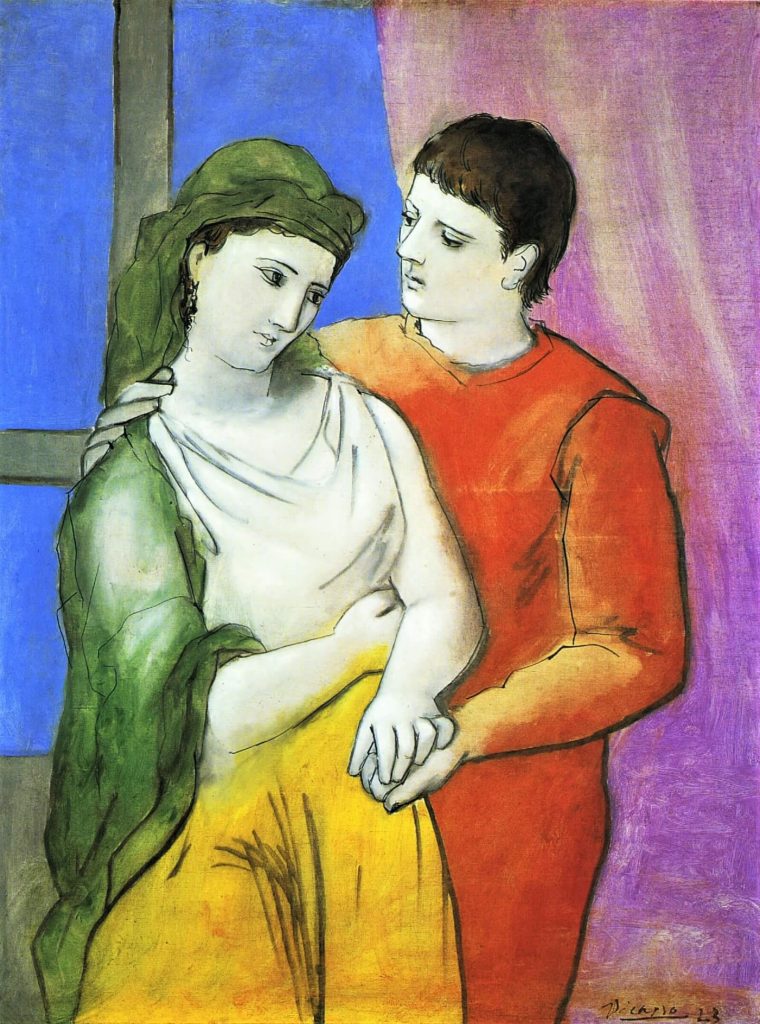
Pablo Picasso, Lovers, 1923, National Gallery of Art, Washington, DC, USA. © Sucesión Pablo Picasso, VEGAP, Madrid, 2023
Pablo Picasso (1881 – 1973) was one of the most influential artists of the 20th century. His ever-changing style influenced countless contemporaries around the world. Picasso resided in Paris, France during the 1920s where and when he mingled with the famous café society of the les années folles or crazy years. Picasso’s Paris was an artistic gem that boasted photographer Man Ray, writer Ernest Hemingway, musician Igor Stravinsky, architect Le Corbusier, fashion designer Coco Chanel, singer Josephine Baker, and actress Colette. It was during this vibrant time that Picasso created a modern interpretation of Neoclassicism. He returned to more natural perspectives and realistic forms. One of his most famous Neoclassical images is Lovers from 1923. It is a symphony of color, form, and line.
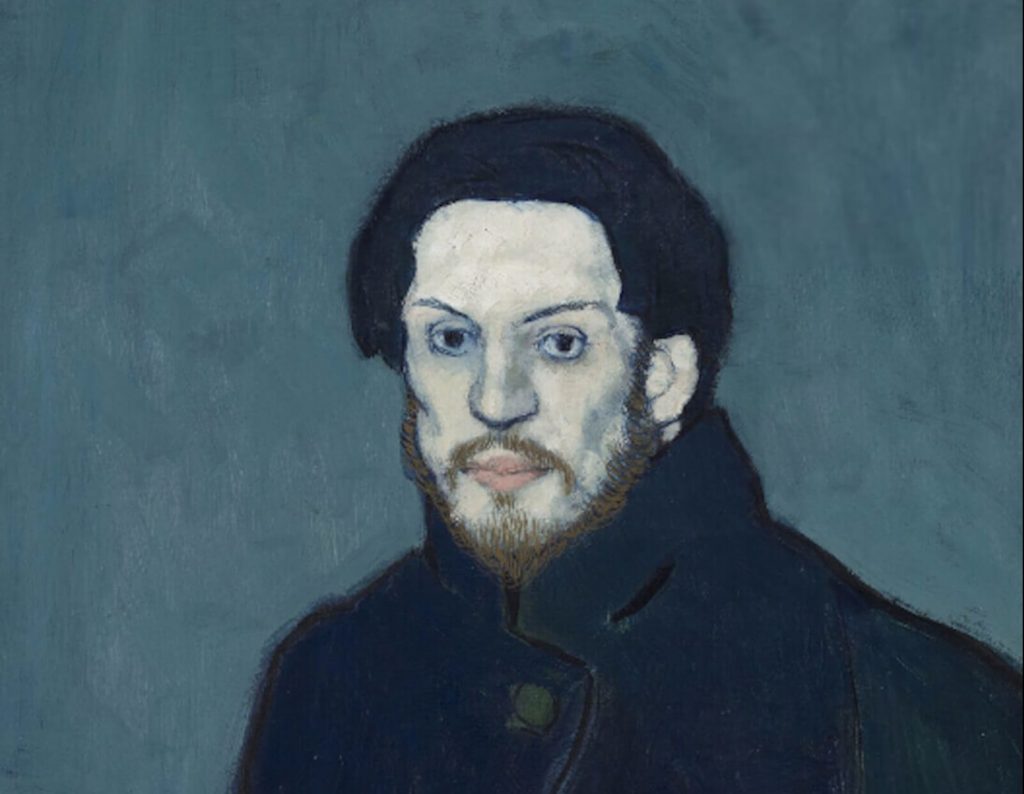
Pablo Picasso, Self Portrait, 1901, Musée Picasso, Paris, France. © Sucesión Pablo Picasso, VEGAP, Madrid, 2023. Detail.
Lovers is an oil on canvas that measures 97.2 centimeters wide and 130.2 centimeters high or 38 ¼ inches wide by 51 ¼ inches high. It features a couple with a woman on the left and a man on the right. They embrace each other as their eyes look elsewhere. Behind the two figures is a window on the left. It is ash gray with glass panes of cloudless blue sky.
Additionally, a plain mauve curtain hangs on the right. There is tension in the scene caused by the flat areas of vivid color merely outlined in bold black lines. The simplistic but bold composition expresses a beautiful but tense moment. What are the two lovers thinking?
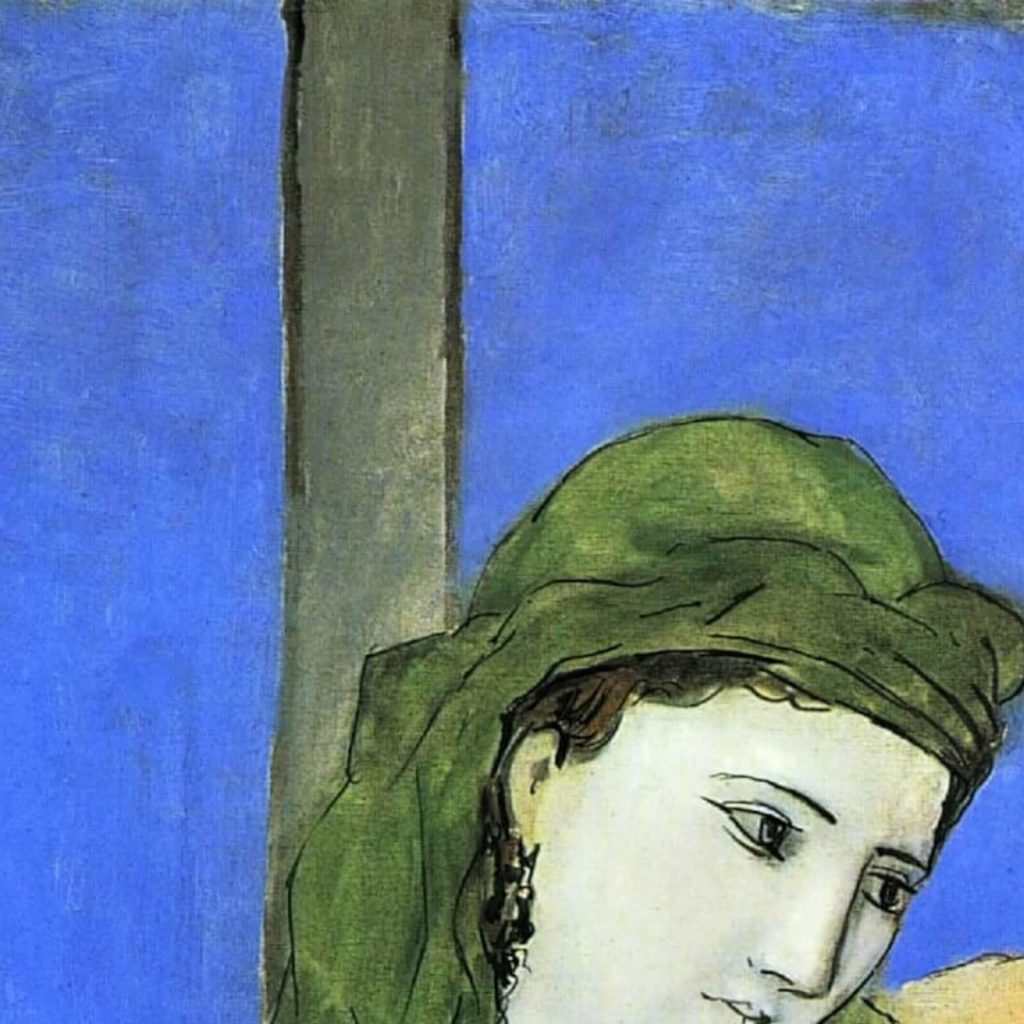
Pablo Picasso, Lovers, 1923, National Gallery of Art, Washington, DC, USA. © Sucesión Pablo Picasso, VEGAP, Madrid, 2023. Detail.
The man and woman are painted using similar colors and lines. Their skin is cotton white, their hair is chocolate brown, and their Greek noses are strong and straight. Their lips are small and pouty and almost imply an unsaid conversation. What do they want to say to each other?
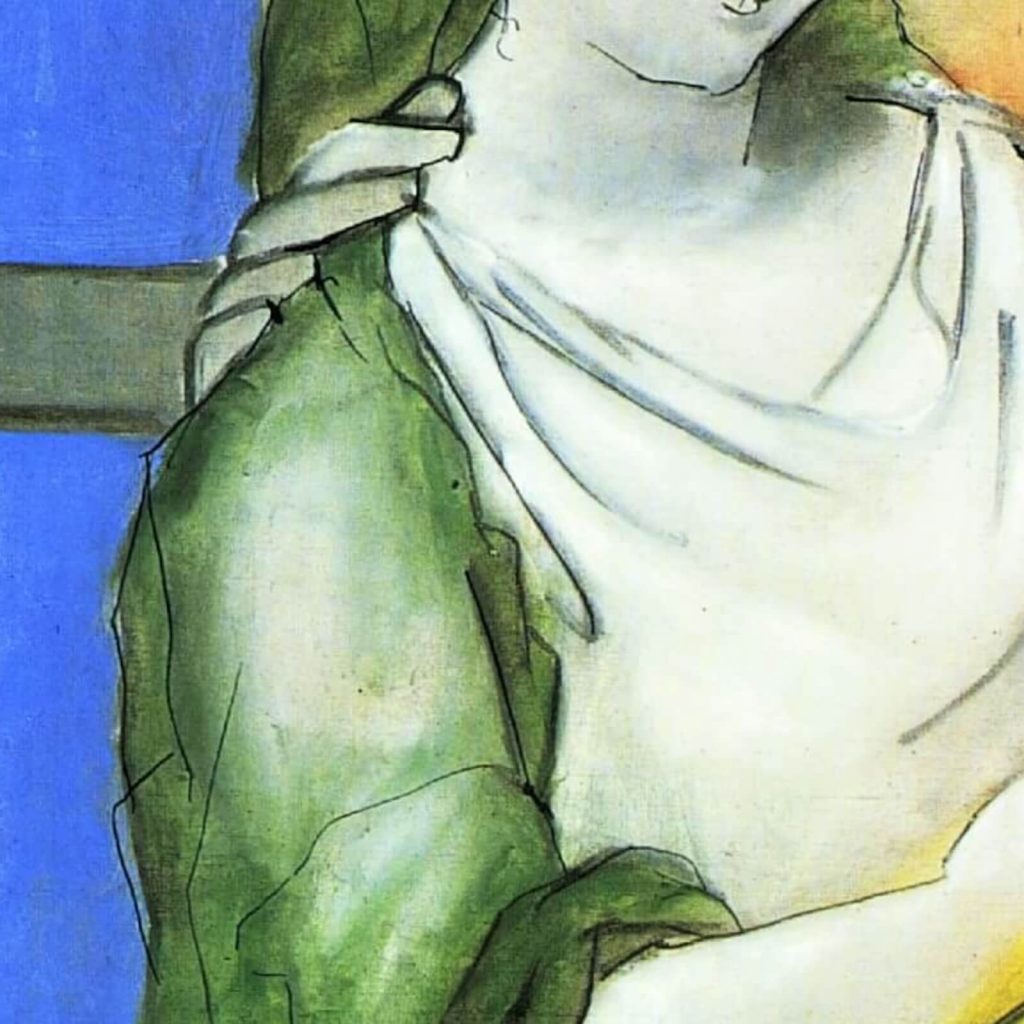
Pablo Picasso, Lovers, 1923, National Gallery of Art, Washington, DC, USA. © Sucesión Pablo Picasso, VEGAP, Madrid, 2023. Detail.
There is an almost Italian Renaissance essence to the scene. The woman’s flowing green headdress, white tunic, and yellow skirt are distinctly not the fashion of 1923 Paris and the man’s coral red suit would not fit in Picasso’s modern world either. The figures feel more like 16th-century Florence. Therefore, Picasso is transporting the viewer to a different time and place. Renaissance Italy inspires images of passion and sensuality: the perfect location for a mysterious, amorous couple.
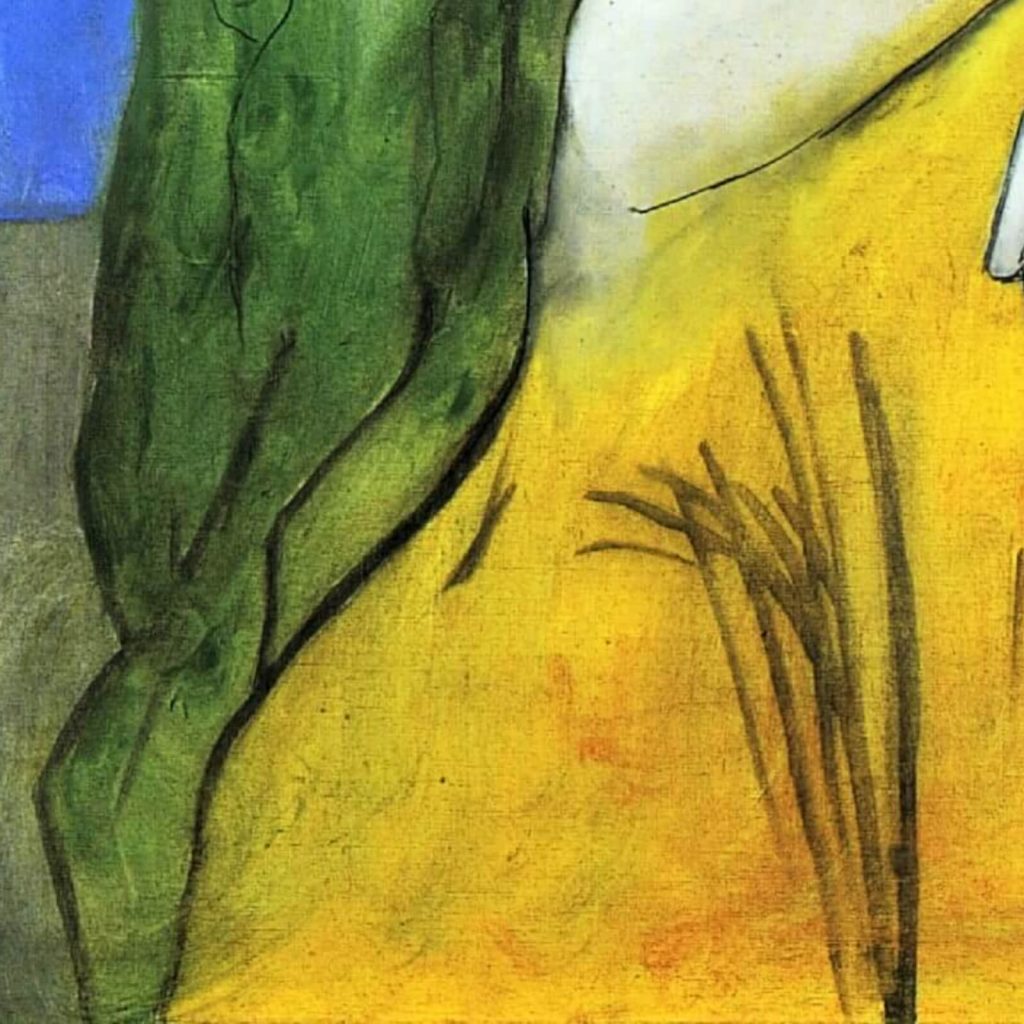
Pablo Picasso, Lovers, 1923, National Gallery of Art, Washington, DC, USA. © Sucesión Pablo Picasso, VEGAP, Madrid, 2023. Detail.
Minimalist black lines form borders and shadows to the different areas of the composition. The woman mainly receives expressive attention to her breasts and pubic area where multiple lines imply the folding and rippling fabric. Contrastingly, the man has a few lines beside a couple surrounding his arm on the right side of the painting. Picasso was a passionate lover of women, but his extreme machismo attitude is not felt in this painting. Instead, a softer, gentler, and more tender side of Picasso is felt in the image. The couple feels vulnerable.
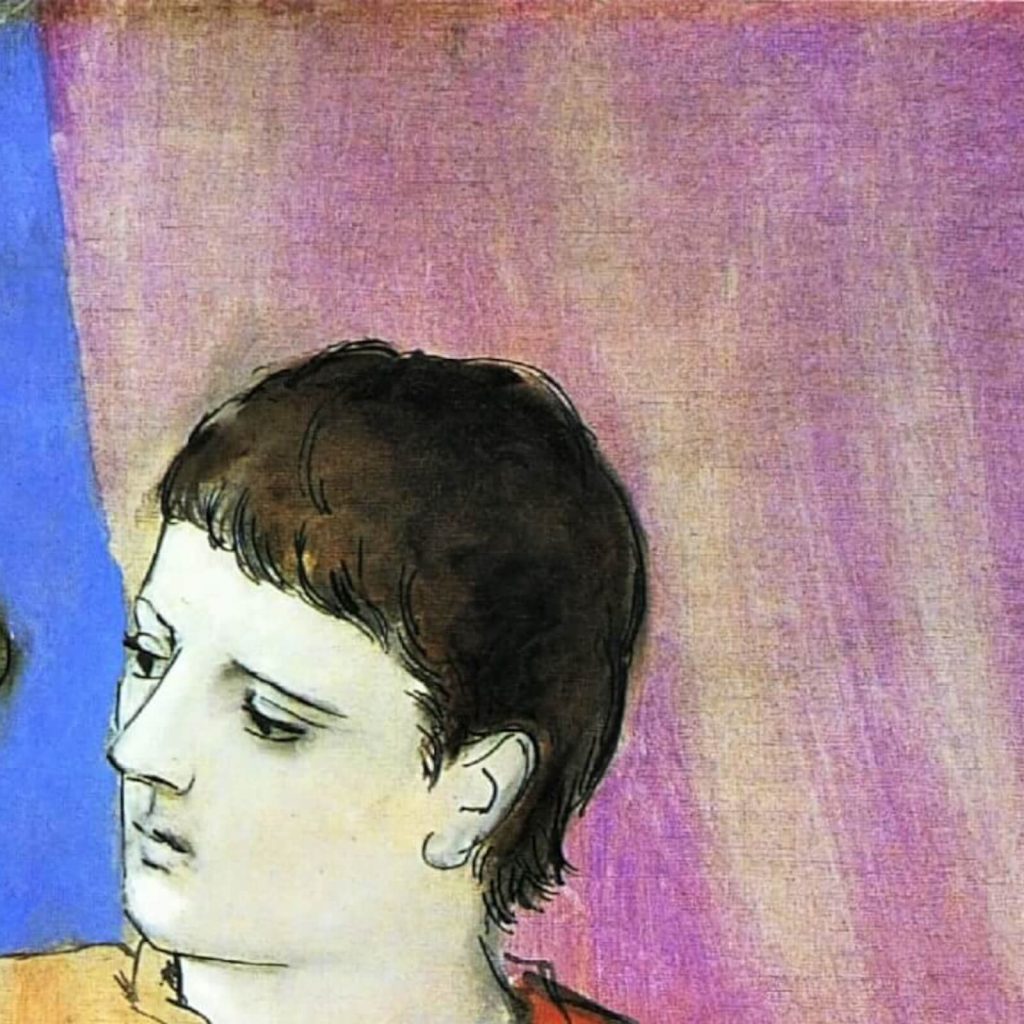
Pablo Picasso, Lovers, 1923, National Gallery of Art, Washington, DC, USA. © Sucesión Pablo Picasso, VEGAP, Madrid, 2023. Detail.
The viewer is witnessing a moment of courtship. The woman’s shoulder and waist tilt upward from left to right, however, the man’s body tilts downward from left to right. Their bodies oppose. Similarly, their faces contrast with the woman’s face looking downward and to the right meanwhile the man’s face looks upward and left. Their opposite body postures create contrast and balance, adding energy and interest to an otherwise calm scene. Is the woman nervous to accept the man’s affectionate advances with her down-cast eyes? Is the man seeking reassurance of his love by looking affectionately upward and embracing her shoulder and her hand with his hands?
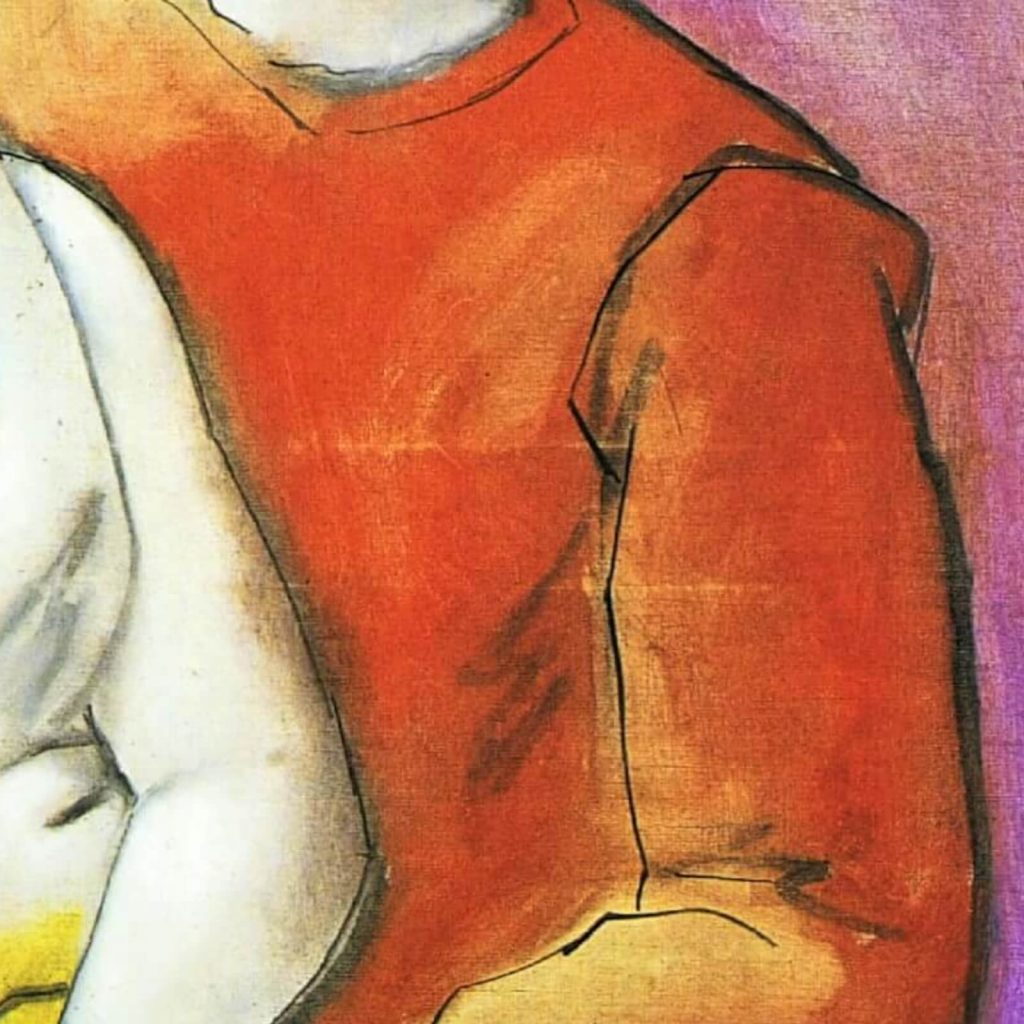
Pablo Picasso, Lovers, 1923, National Gallery of Art, Washington, DC, USA. © Sucesión Pablo Picasso, VEGAP, Madrid, 2023. Detail.
When Picasso created Lovers in 1923, he had already experimented with Cubism. Therefore, the Lovers is a return to more traditional painting techniques with its unfractured bodies, single perspective, and a single moment in time. However the lack of deep shading, use of bold color patches, and the cartoon-like outlining all inject a modern flare to the painting. Picasso is not returning to the Beaux-Arts style of 19th-century Paris. He is reinventing Neoclassicism through a post-Cubist lens that would feel modern to his contemporaries like Henri Matisse and André Derain. Lovers studies courtship, returns to earlier painting traditions, and invents a new interpretation. It is a passionate Picasso. It is the Lovers. It is lovely.
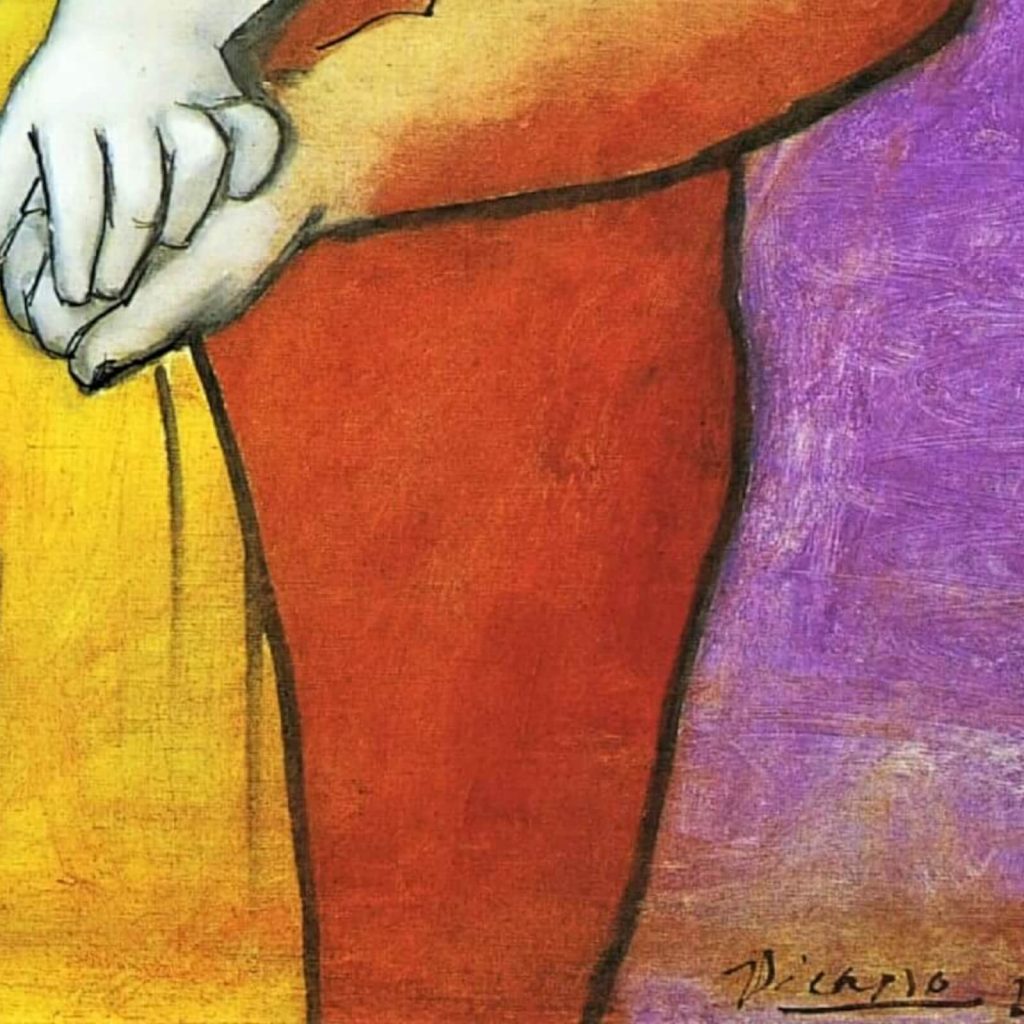
Pablo Picasso, Lovers, 1923, National Gallery of Art, Washington, DC, USA. © Sucesión Pablo Picasso, VEGAP, Madrid, 2023. Detail.
Beckett, Wendy, and Patricia Wright. Sister Wendy’s 1000 Masterpieces. London, UK: Dorling Kindersley Limited, 1999.
Gardner, Helen, Fred S. Kleiner, and Christin J. Mamiya. Gardner’s Art Through the Ages. 12th ed. Belmont, CA, USA: Thomson Wadsworth, 2005.
Johanson, Karen. “Artists in Paris in the 1920s.” Stacker Media, June 2, 2021.
“Lovers.” Collection. National Gallery of Art, Washington, DC, USA. Retrieved 6 May 2023.
“Self Portrait.” Collection. Musée Picasso, Paris, France. Retrieved 6 May 2023.
DailyArt Magazine needs your support. Every contribution, however big or small, is very valuable for our future. Thanks to it, we will be able to sustain and grow the Magazine. Thank you for your help!